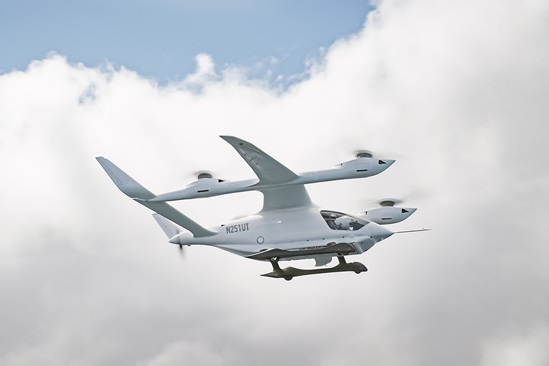Ampaire’s hybrid-electric Caravan runs on SAF
Ampaire CEO Kevin Noertker said a recent ground test of the Eco Caravan on sustainable aviation fuel demonstrates how hybrid-electric propulsion can amplify the benefits of sustainable fuels.
The Eco Caravan replaces the Cessna 208B Grand Caravan’s Pratt & Whitney PT6 turboprop with Ampaire’s AMP-H570 AMP Drive hybrid-electric propulsion unit. It first flew in 2022, and the company hopes to certify the retrofit by the end of 2025. Ground testing at Camarillo Airport in California February 14 used SAF derived from carbon dioxide, and Noertker said pairing a combustion engine with an electric propulsion system amplifies the efficiency of SAF usage by two to three times.
The Eco Caravan uses a 550-horsepower compression-ignition engine and electric motor in an integrated parallel hybrid, which means both the engine and motor provide torque to the propeller directly. A pilot might taxi on electric power, take off on dual power, and switch to the combustion engine for cruise. Noertker said the electric powertrain adds 200 to 250 horsepower to the system, bringing the total power rating to around 750 horsepower, and meets aviation’s two-phase power requirements better than traditional combustion engines.
“Historically, aviation has been unkind to engines,” he said, explaining that aircraft need phenomenal power for takeoff, but then throttle back significantly for cruise. “What that leaves in a traditional engine is an inefficient engine.”
A compression-ignition engine, commonly known as a diesel cycle engine, runs on Jet A or SAF and provides the base load of power for the Ampaire system. The lithium-ion-based electric vehicle system comprising batteries, power electronics, and motor provides the excess power for phases of flight that need it. The system uses a charging system similar to an EV plug but is not dependent on charging infrastructure; the batteries can recharge from excess engine power in cruise, descent, and landing.
The SAF used in the ground testing was a synthetic paraffinic kerosene produced by Dimensional Energy, a company that makes fuels and products from carbon dioxide emissions and renewable power. Elemental Excelerator, a nonprofit investor in climate technologies, has partnered with Ampaire since 2018 and invests in both Ampaire and Dimensional Energy. Noertker says using a hybrid-electric system cuts fuel burn by 50 to 70 percent, and using a fuel that’s carbon neutral or carbon negative further improves the carbon efficiency of the overall solution.




